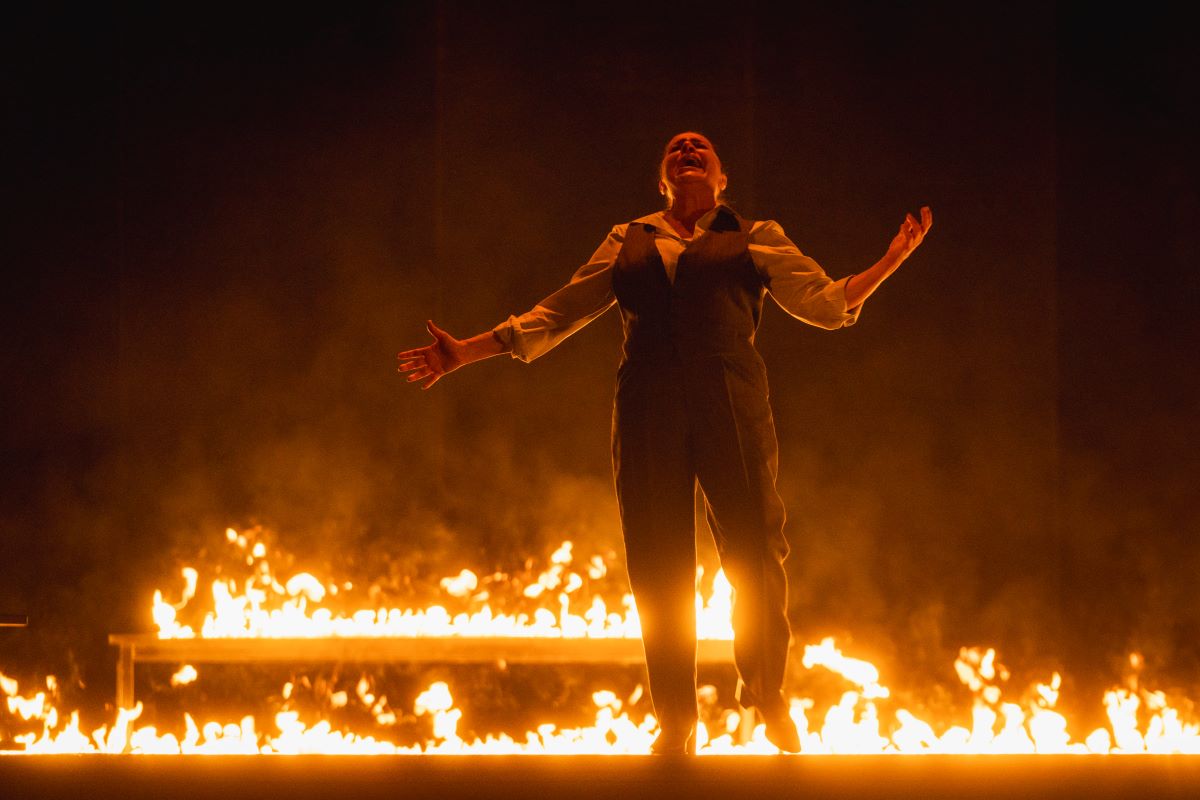Mozart was commissioned to compose La Clemenza di Tito, (The Clemency of Titus), in 1791 by impresario Domenico Guardasoni in Prague, to celebrate the coronation of Leopold II as King of Bohemia. Antonio Salieri had declined the offer, citing his busy schedule. It’s remarkable that Mozart returned to the opera seria format, which he had previously left behind. His last operas were the three collaborative works with Lorenzo Da Ponte, and his next and final opera, Die Zauberflöte, was already in progress. However, this was a lucrative commission, and Mozart had fine-tuned his craft by this point. Despite the return to the formalities of opera seria, Mozart infused his characters with deep emotional complexity, showcased in the grand arias.
Vitellia, whose father, the emperor Vitellius, was deposed by Tito’s father Vespasian, feels that her power has been stolen. In a bid for revenge, she convinces Sesto, who is infatuated with her, to assassinate Tito and set fire to the Capitol building. Tito is rumored dead, and Sesto’s betrayal is eventually discovered. After being arrested, Sesto learns that Tito has survived, and the general steps in to show clemency. Tito’s character carries a revolver throughout (though someone should remind him never to leave his finger on the trigger!). In the opera’s final twist, he pardons everyone but tragically shoots himself.
Recently performed in Salzburg in a different production, La Clemenza di Tito was updated to a modern-day setting, with Vitellia resembling Giorgia Meloni. The production concludes with her triumphantly declaring her power after defeating Tito, an echo of contemporary political events, such as the 2021 storming of the U.S. Capitol by Trump supporters. Mozart’s uncanny prescience about the future is hard to ignore.
This minimalist new production, also seen in Copenhagen and Hamburg, transposes the action to modern Rome. Massive grey sets representing the Roman Capitol and large, stark lettering—Delizia, Potenza, Tradimento, Clemenza—dominate the stage. Tito and his senators wear grey suits, adding to the contemporary feel. Act I ends with a striking visual of Sesto standing before the Capitol in flames, with the heat almost palpable from the fifth row.
The singing throughout is superb.
Cecilia Bartoli, the celebrated Italian mezzo-soprano, takes center stage as Sesto, earning a standing ovation for her commanding performance. Her rendition of “Parto, parto” is a tour de force, showcasing her technical brilliance and emotional depth. The quiet moments, such as the repeated “guardami” (look at me), highlight Sesto’s realization that Vitellia doesn’t truly care about him. The frustration is palpable as Bartoli skillfully navigates difficult coloratura while portraying Sesto’s anguish. In a powerful moment of self-loathing, she tries to strangle Vitellia while singing. Later, in “Deh, per questo instante sola” (Oh, for this one instant), Bartoli’s voice is rich with emotion as Sesto contemplates his fate in front of Tito. Her performance is a masterclass in interpretation—through her pauses, glances, and body language, she captures the essence of Sesto’s tortured soul.

Italian tenor Giovanni Sala, despite battling flu on the day of the performance, brings elegance and ease to his portrayal of Tito. His portrayal of the young, benevolent ruler resonates with the audience, making his tragic suicide all the more devastating.
Young Israeli mezzo Anna Tetruashvili as Annio is less known than other cast members but gives a stunning performance. Her arias, “torna di Tito al lato” (Return to Tito’s side) and “tu fosti tradito” (You were betrayed), display her gorgeous mezzo timbre and rich vocal palette. She has the physique to convincingly play male roles and is certainly an emerging talent to watch.
Armenian soprano Mané Galoyan as Vitellia is well-suited for the role, with strong lower notes that are vital for the character’s music. Her final recitative, ecco il punto, and the challenging Rondo aria “non più di fiori” (No more flowers), with its intricate florid passages, are sung with impressive ease and vocal color. Galoyan’s subtle variations keep the intensity alive throughout this long aria.
Mélissa Petit, a French soprano from Saint-Raphaël, gives a charming performance as Servilia, her bright top notes enhancing the role’s lyrical quality.
Hungarian bass-baritone Péter Kàlmàn, a favorite in Monaco, brings luxury casting to the role of Publio, which, despite lacking an aria, benefits from his strong presence and commanding voice.
La Clemenza di Tito is experiencing a renaissance. With political upheaval becoming ever more frequent, the opera’s themes feel startlingly modern and relevant. This production, with its vision of Sesto wracked with anguish in front of a burning Capitol, will stay with you long after the curtain falls. Don’t miss the opportunity to see this evocative and timely interpretation.
Salle Garnier Opéra de Monte Carlo
OPERA SERIA IN TWO ACTS
Music by Wolfgang Amadeus Mozart
Libretto Caterino Mazzolà after Pietro Metastasio
Conducted by Gian-Luca Capuano
Directed by Jetske Mijnssen
Photo Credit Marco Borelli

